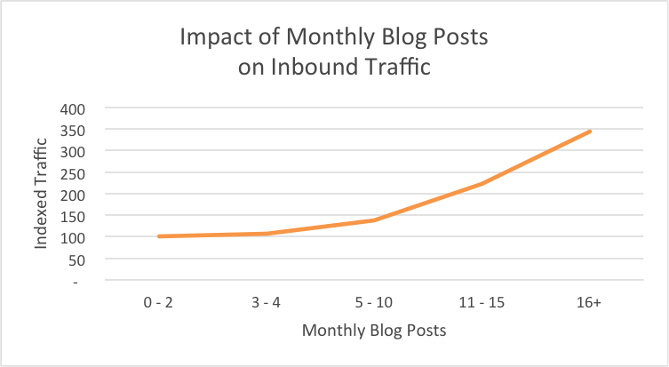
Gone are the days of releasing fluff content into the wild and feeling confident it will find an audience.
Whether you’re scrolling through social media, digesting a whitepaper, skimming an online recipe, or reading blog articles like this one, content marketing in 2022 all comes down to quality.
But what happens when you’re the one tasked with creating that quality content?
Your digital content must have purpose, it must be optimized, it must tell a story, and it must have a strong call to action.
To tie it all together and get your content to both rank and convert, you need a content strategy framework — a roadmap will be the difference between content fame and flop.
Here’s how to develop a unique content strategy framework that will set you on the path to success.
Effortlessly export your Google Docs to WordPress with just 1-click.
Get Started Today
A content strategy framework is a structured content plan for what content you’ll create, who it’ll be targeted to, and how it’ll help you achieve your business’ goals. Think of it how a teacher thinks of their lesson plan template. It’s fundamental in order to get the best results.
A well-designed knowledge base template works the same way. It gives you a clear structure for organizing information, making it easier for users to quickly find answers without confusion.
The majority of companies begin with content production in house.
They research the benchmark number of posts and may even research what their competitors are talking about.
They search the web and learn, for instance, that businesses that blog more than five times a month see 200% more traffic than websites that don’t:

The problem is that the generic content that most companies create isn’t going to help them with bottom-line growth.
You need to be creating excellent, targeted, search-oriented content that drives brand awareness and a reputation for thought-leadership as well as leads and sales.
Unless you want to waste time creating content that nobody sees, it’s time to create a content strategy framework.
So what does that look like?
As we talked about in the beginning of this article, content without direction is merely fluff.
Once upon a time, that fluffy content actually yielded clicks.
I know. Crazy right?
If you loaded your blog posts with keywords and backlinks, you could game the system and rise to the top.
Things have changed.
Content marketers had to also wise up, and begin to develop content that not only serves the SERP gods but gives their readers (and potential clients) the answers they need.
But there needs to be some structure to how this is all going to play out.
A content strategy framework is that structured plan — showcasing exactly how you’ll create content, why you’ll create that content, who it’ll be written for, and how it impacts the buying process.
In the next section we’ll break down the key ingredients to a successful content strategy framework.
Why do you need goals?
From brand awareness to closing deals, your goals set the tone of your content.
But “getting sales” isn’t an actionable goal, so you need to dig deeper into subgoals.
Think of subgoals in terms of cause and effect.
For instance, let’s take an example and break it down into subgoals, cause, and effects:
Subgoal: Increase article traffic by 5% in the next 30 days
Cause 1: Develop XX more blog posts on XX high volume topics
Effect 1: Generate 5% more traffic or 500 more visits in the next 30 days
How do you figure out the pieces of the formula to make this happen?
Let’s say we have a goal to increase traffic by 5% in the next 30 days.
Our first stop is Google Analytics.
Look at your current monthly traffic and sort the report by organic visits in the last 30 days.
The “sessions” result is the traffic that you’re currently generating from organic search each month.
If your goal is to increase visits by 5%, That means you’ll need 189 more sessions next month, totaling 2,083 visits.
Now take a look at what existing content is bringing in the most traffic.
This will give you a good idea about what each content piece brings in for traffic.
So, your cause is to write a great piece of content that brings in 200 sessions next month and you have your desired effect.
Now you know the content type you should focus on, let’s talk about who it should be directed towards.
When developing a content marketing plan your audience is a major factor.
A fleshed out audience persona will help you to create more appealing content.
Understand the background of your target audience. What’s their title? How many years have they been with a company? Where else have they worked? What’s their home life like?
Identifiers such as how they might want to be contacted, who else might be involved in a connection, and what type of demeanor they have are other key factors.
A great starting point would be to create a brand persona. Something like this…
In addition, ask yourself the following questions:
Now that you have your audience, let’s talk about how they work.
Every good story has a journey.
The same goes for every great content strategy.
It’s your goal to understand the journey that you need to send your user on by having a clear grasp of what their user flow might look like.
A great place to start is by analyzing how your current audience interacts with your content.
Let’s take a look at this Google Analytics example:
You can see that the average user flow typically follows this pattern:
User is brought in by a blog post -> clicks into a term post on blogging statistics -> comes back for a tactical post on link explorer -> checks out the company portfolio and ends with the CTA which is “Get Started”.
This is a clear example of reeling a customer in and having high-quality content that’s structured for the various stages of a user journey.
You can now take all of this information and begin to craft unique content that helps to direct your readers through to your final goals.
In fact, let’s talk about that unique content.
With over four million blog posts written per day, how do you stand out?
Especially in a world where digital marketing content is only getting better and users are getting smarter.
In order for your framework to work as you planned, you need content that goes way beyond the daily SERP results.
Your marketing efforts need to be focused on a content lifecycle that can go on to yield results time and time again.
Many people try to copy the format of those content unicorns that are part of that mythical top tier of search engine results.
The problem is that those content ideas were only legendary because they were unique.
Copying them is counterintuitive.
But they do hold the keys to what great content is:
So how do you begin the journey and where do you find the ideas to guide your audience along a strategic path?
We look at the funnel stage pain points.
Pain points can be completely different depending on where your visiting leads are in the funnel.
Someone searching for “how to change an image size in Photoshop?” is definitely still in the learning phase.
Their pain point is much more about educating on a broader scope than someone searching for “When to use “blend if” on a layer mask?” That person is going to be much lower in the funnel with different pain points and needs.
Take your user flow and start a spreadsheet to map out a user journey:

In this case, we start with the most high level questions and move the user through to the journey to fulfill their needs.
To engage your prospects at each phase of the journey, you’ll need an understanding of where to find them on social media.
When focusing on digital content strategy the biggest mistake companies make isn’t understanding the method of social media content promotion.
Each social media channel has its own audience and personality.
Think of them as a group of friends:
Many corporate companies look at how many people use a platform or what their competition is doing and neglect to understand the personalities and audience within each.
Use this knowledge to your benefit:
Social media is also a great way to share existing content in a new way.
You’ve heard the phrase “no point in re-inventing the wheel”?
Don’t do it.
One of the best parts of content marketing is that great content stays great.
You can audit your existing content and re-purpose or update where needed.
Review your analytics and see which pages produce the most traffic.
Start with that content.
Optimize what you have, update the information and images, and repackage all of that content gold for a new audience.
Pepper in a new blog post or other content efforts here and there, and you have a recipe for success.
Not having a content marketing strategy is like traveling across the country without a GPS or map of any kind.
You may see some interesting sights along the way but you also may not get to your destination.
Not without a lot of wasted time.
Content planning takes the guesswork out of content creation and yields actionable results.
Setting goals, understanding your target audience and their behaviors, exploring your channel options, performing a content audit, and optimizing your writing for SEO will help you navigate your way to a more solid ROI.
No, it’s not an easy task.
Yes, it’s tedious and boring.
But, it is the key to successful content marketing and — at the end of the day — it’s the roadmap to your destination.
In a few months, when your content ideas transform thousands of readers into real people giving you money, you’ll be glad you put in the content marketing efforts at the beginning.
To make content production even smoother, check out Wordable’s easy-to-use Google Docs to WordPress exporting tool.